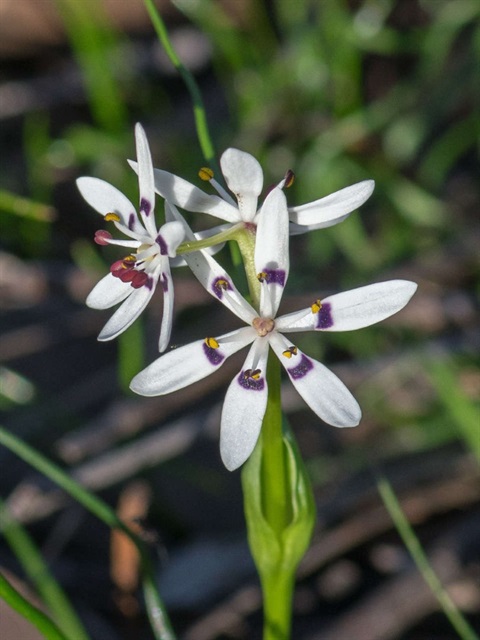
Wurmbea dioica ssp. dioica
Early Nancy
Perennial herb with corms and fibrous roots. Male and female flowers on separate plants.
Additional information
- SynonymAnguillaria dioica
- FamilyColchicaceae (syn. Liliaceae)
- StoreyLower storey
- Size5-20 cm x 10 cm
- Plant groupingLilies & Irises
- Leaves3 fine grass-like leaves 2-7 cm x 0.5-2 mm, stem-sheathing.
- Flower colourWhite with a purple band
- Flowering timeJuly to October
- FlowersFlower spike of 2-7 stalkless honey-scented flowers with a purple nectar-secreting gland towards the base of sepals and petals, red or purple anthers on male flowers.
- Bird attractingNo
- Butterfly attractingNo
- Frog habitatNo
- Growing conditionsMoist well drained soils in open forest and woodland. Full sun, semi shade.
- Garden usePlant amongst low herbs in rockeries or under trees. Plants die down after flowering.
- Commercially availableWholesale only - order in advance
- Conservation statusLocally common within its preferred growing conditions
- Aboriginal Use Food - corms
Photo Gallery
Photographer/s: 1 Gordon Carter ©; 2 David Francis, NatureShare ©; 3 Chris Lindorff, NatureShare ©; 4 Marilyn Bull ©
Plant Communities